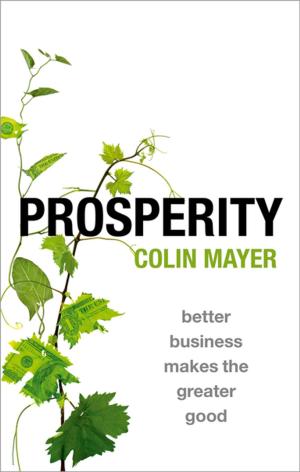Nature's Building Blocks
An A-Z Guide to the Elements
Nonfiction, Science & Nature, Science, Chemistry, General Chemistry, Reference & Language, Reference| Author: | John Emsley | ISBN: | 9780192570468 |
| Publisher: | OUP Oxford | Publication: | August 25, 2011 |
| Imprint: | OUP Oxford | Language: | English |
| Author: | John Emsley |
| ISBN: | 9780192570468 |
| Publisher: | OUP Oxford |
| Publication: | August 25, 2011 |
| Imprint: | OUP Oxford |
| Language: | English |
John Emsley's Nature's Building Bocks was published in paperback in 2003. In this readable, informative, and fascinating guide to the elements are entries on each of the 100-odd chemical elements, arranged alphabetically from actinium to zirconium. Each entry comprises an explanation of where the element's name comes from, followed by Body element (the role it plays in living things), Element of history (how and when it was discovered), Economic element (what it is used for), Environmental element (where it occurs, how much), Chemical element (facts, figures, and narrative), and Element of surprise (an amazing, little-known fact). Since publication of the first edition there have been a number of developments. Three new chemical elements have been named and validated: darmstadtium, roetgenium, and copernicium and the section on 'transfermium elements' has now been incorporated into the main part of the book. Economic uses of elements have grown, and some quite rare elements such as Scandium are now economically important, along with updates to elements such as gold due to new roles in industry. Fully revised and updated for 2010, this browsable compendium holds a wealth of useful information.
John Emsley's Nature's Building Bocks was published in paperback in 2003. In this readable, informative, and fascinating guide to the elements are entries on each of the 100-odd chemical elements, arranged alphabetically from actinium to zirconium. Each entry comprises an explanation of where the element's name comes from, followed by Body element (the role it plays in living things), Element of history (how and when it was discovered), Economic element (what it is used for), Environmental element (where it occurs, how much), Chemical element (facts, figures, and narrative), and Element of surprise (an amazing, little-known fact). Since publication of the first edition there have been a number of developments. Three new chemical elements have been named and validated: darmstadtium, roetgenium, and copernicium and the section on 'transfermium elements' has now been incorporated into the main part of the book. Economic uses of elements have grown, and some quite rare elements such as Scandium are now economically important, along with updates to elements such as gold due to new roles in industry. Fully revised and updated for 2010, this browsable compendium holds a wealth of useful information.















